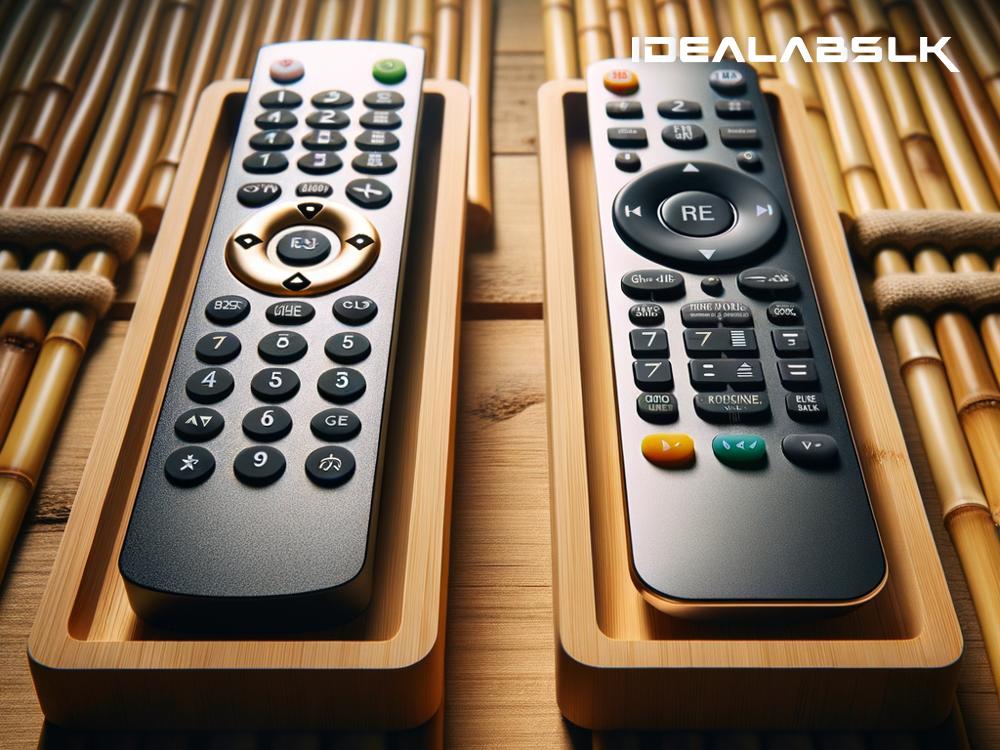How Do Samsung and Sony’s Eco-Friendly Remotes Stack Up Against Each Other?
In today’s environmentally-conscious world, tech giants are not just competing on who has the biggest screen or the most advanced features – the race for sustainability is on. Samsung and Sony, two titans of the tech industry, have both introduced eco-friendly remote controls for their televisions. But how do these green gadgets stack up against each other? Let’s dive into the world of sustainable zapping to see how the Samsung Eco Remote compares with the Sony Eco TV Remote.
Samsung’s Step into Sustainability
Samsung has been making waves with its Eco Remote for a while now. It’s a sleek, minimalistic remote that draws attention not just for its looks but for its eco-friendly credentials. What makes it stand out? The Samsung Eco Remote is powered by solar energy. Yes, you heard that right! It has a solar panel on its back, which means you can recharge it by simply leaving it in a well-lit room or even under a lamp.
But Samsung didn’t stop there; realizing that solar power might not always be enough, especially in gloomier parts of the world, the latest version of the remote can also be charged via radio frequencies from devices like Wi-Fi routers. Pretty smart, right? This feature significantly extends the battery life of the remote, reducing the need for disposable batteries.
Moreover, Samsung has focused on the materials used for the remote. It’s made from a high percentage of recycled plastic, further reducing its environmental impact.
Sony’s Eco-Friendly Answer
Not to be outdone, Sony has also thrown its hat into the ring of sustainability with its own Eco TV Remote. While the approach might differ slightly from Samsung’s, Sony’s commitment to reducing environmental impacts is equally commendable.
One of the most standout features of Sony’s Eco Remote is its use of recycled materials. Sony has chosen to make the casing of the remote from recycled plastic from their own manufacturing processes, showing a commitment to reducing waste and promoting a circular economy.
In terms of power, the Sony Eco TV Remote takes a slightly more traditional route compared to Samsung’s high-tech solution. It relies on good, old rechargeable batteries. However, these are not your typical AAAs; Sony provides a higher capacity, longer life rechargeable battery that can significantly reduce the waste associated with disposable batteries over the lifetime of the TV.
Sony’s remote also features a user-friendly design, with a focus on durability and longevity, ensuring that it doesn’t need to be replaced often, further reducing its environmental impact.
The Verdict: Which Remote Reigns Supreme?
Both Samsung and Sony have made impressive strides in creating more sustainable products, and their eco-friendly remotes are testaments to their efforts. Choosing a winner depends on what aspects of sustainability you value most.
If innovative, alternative energy sources excite you and you live in a sunny area (or don’t mind keeping your remote near a lamp), Samsung’s Eco Remote with its solar panel and the ability to harness power from radio waves might just win you over. Its commitment to reducing battery waste and using recycled materials is commendable.
On the other hand, if you’re impressed by the use of recycled materials and the idea of a circular economy, and you prefer a more straightforward approach to the power source, Sony’s Eco TV Remote could be more up your alley. Its emphasis on using recycled plastics and providing a durable, long-lasting product with rechargeable batteries presents a strong case for sustainability.
Ultimately, both remotes offer a glimpse into a future where technology and sustainability go hand in hand. By focusing on eco-friendly design and reducing reliance on disposable batteries, Samsung and Sony are not only making a statement but are also setting the stage for more sustainable product developments down the line.
In the end, the choice between Samsung’s Eco Remote and Sony’s Eco TV Remote might just come down to personal preference and brand loyalty. What’s undeniable, though, is that both companies are leading the charge towards a more sustainable, less wasteful way of enjoying our favorite TV shows and movies. And that’s a win for the planet.

